Mastering Eyeliner Pencil: A Beginner's Guide
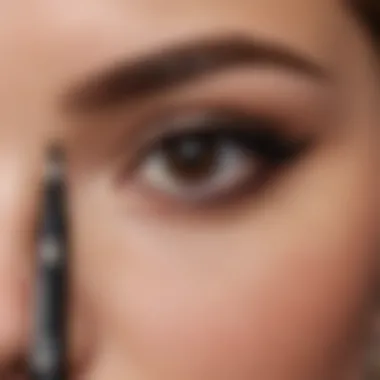
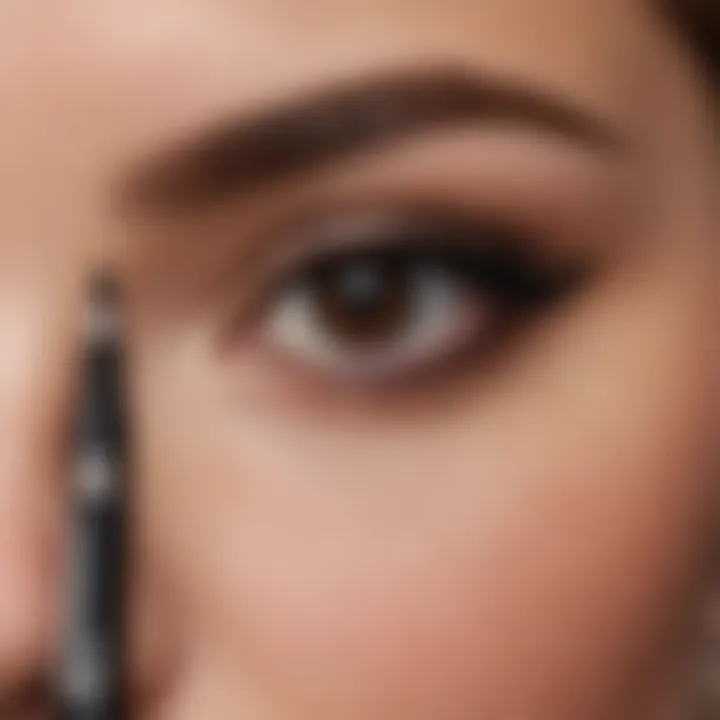
Intro
The art of applying eyeliner pencil holds significant importance in enhancing one's eye makeup skills. For beginners, the task can seem overwhelming due to various techniques and styles available. However, mastering eyeliner application is not merely a requirement, but it is a means of expressing creativity and individuality. The purpose of this guide is to simplify the process into clear, manageable steps. This will equip you with the necessary knowledge to achieve not only precision but also a unique style that suits your personality.
Throughout this guide, we delve into essential techniques and beauty tips that assist in perfecting your eyeliner application. By focusing on relevant fashion trends, optimizing skincare routines for better makeup results, and reviewing popular products, you will gain a well-rounded understanding to elevate your makeup game. Let's explore the world of eyeliner pencil application together with clarity and ease.
Prolusion to Eyeliner Pencil
Eyeliner pencil serves as a fundamental component in the realm of makeup, particularly for enhancing the eyes. For beginners, understanding this tool is essential not just for aesthetic purposes but also for mastering a valuable skill that adds depth and definition to eye makeup. The benefits of using eyeliner pencil extend beyond mere attractiveness; it allows for creativity and personal expression in makeup application.
One of the primary reasons for choosing eyeliner pencil lies in its ease of use. Unlike liquid or gel eyeliners, pencil liners are generally more forgiving and easier to control. This feature makes them particularly appealing to those who are just starting their makeup journey. Furthermore, eyeliner pencils can come in a variety of formulas, which include traditional pencil, retractable, and waterproof options. Each type offers unique characteristics that can cater to different preferences and needs.
Consideration of texture is another important element when discussing eyeliner pencils. Beginners should take note of how various formulas apply on the skin, as some may glide on smoothly while others may require more pressure. Additionally, different pencils may have different finishes, ranging from matte to shimmering, which can influence the overall look.
Furthermore, choosing the right color can be vital for various occasions. Whether aiming for a subtle day look or a bold evening appearance, the color of the eyeliner can drastically change the makeup's effect. Learning to navigate these options is critical for beginners aiming to refine their skills.
In summary, mastering the use of eyeliner pencil is a journey that goes beyond just putting on makeup. It encompasses technique, color selection, and an understanding of one's own eye shape and skin tone. This guide aims to equip readers with the knowledge to confidently choose and apply eyeliner pencil, helping them to develop their eye makeup artistry.
Types of Eyeliner Pencils
Understanding the different types of eyeliner pencils is essential for anyone looking to enhance their eye makeup skills. Each type has its unique characteristics, advantages, and ideal uses. This knowledge not only simplifies the decision-making process but also lays the foundation for achieving varied eye looks.
Traditional Pencil Eyeliner
Traditional pencil eyeliners are probably the most familiar form of eyeliner. These pencils require sharpening, which can lead to waste but can also provide precision. They typically come in a variety of textures, ranging from soft and creamy to firm.
One benefit of traditional pencil eyeliner is its versatility. It can create both fine lines and bold strokes depending on the pressure applied. It is an excellent choice for beginners because it offers a high level of control during application. However, the need for sharpening can be inconvenient, especially when on the go. Users need to consider the hardness of the pencil; softer formulas glide on easily but might smudge more than firmer ones.
Retractable Pencil Eyeliner
Retractable pencil eyeliners offer a modern take on the traditional pencil. These eyeliners twist up instead of needing to be sharpened. This feature not only reduces waste but also enhances convenience.
Retractable eyeliners often come with more advanced formulations that may include waterproof or smudge-proof properties. They are generally smoother and can achieve a more uniform line compared to traditional pencils. Furthermore, they are ideal for travel since there is no need for a sharpener. However, users must ensure they do not twist the pencil too high, which can lead to breakage.
Gel and Waterproof Pencils
Gel and waterproof pencils combine the best of both worlds, offering the ease of pencil application with the lasting power of gel formulations. They often provide a more intense color payoff and a creamier texture.
Waterproof pencils are particularly beneficial for those who want their eyeliner to last through various conditions, such as rain or long hours. They are excellent for creating sharp lines that do not easily budge. However, they may require a more careful application technique, as they can dry quickly. Knowledge of the skin type and eye sensitivity is crucial since some formulas may irritate sensitive eyes or skin.
In summary, knowing the various types of eyeliner pencils allows users to choose the product best suited to their needs and lifestyle. Understanding the nuances between each type will empower beginners to explore different looks with confidence.
Choosing the Right Eyeliner Pencil for Beginners
Choosing the right eyeliner pencil is crucial for beginners. The right product can make application easier and enhance your overall look. Eyeliner pencils come in various formulas and textures. Understanding these differences is key to making an informed choice. The right pencil will provide smooth application and staying power, allowing you to focus on mastering your technique rather than struggling with your tools.
Consider the Formula and Texture
When selecting an eyeliner pencil, take note of its formula and texture. There are several types available, each offering distinct benefits:
- Traditional pencil: Offers a classic feel but may require sharpening.
- Retractable: Simple to use and no sharpening needed.
- Gel and waterproof: Often glide on smoothly and last longer, making them perfect for all-day wear.
Consider your skill level and preferences. If you are new, a softer formula may help to achieve better control during application. A harder pencil might be more challenging to use without the proper technique.
Color Selection for Day and Night
Color choice is vital for creating different looks. For daytime, soft brown or taupe shades can look natural and fresh. They define the eyes without being harsh. As evening approaches, consider bolder shades like black or deep plum. These colors add drama and enhance your features in low light.
Moreover, don't shy away from experimenting with colored eyeliners. Shades like navy or green can bring out the color in your eyes and add a unique touch. Keep the occasion in mind when selecting your colors. With a bit of practice, you will find what complements your style best.
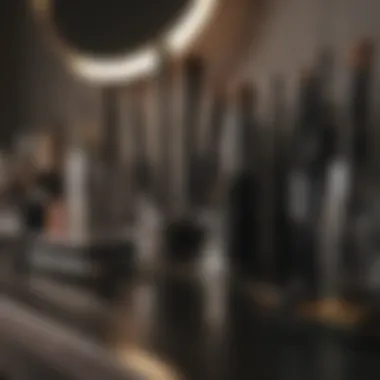

Essential Tools for Eyeliner Application
The process of applying eyeliner pencil goes beyond merely selecting the right pencil. It involves using a set of essential tools that enhance the final outcome. Having the correct equipment can dramatically improve precision and ease during application. The right tools not only aid in creating a desired look but also help in maintaining hygiene and achieving smooth lines. The benefits of using proper tools are evident in the overall quality of the makeup. It might seem minimal, but investing in each tool will reflect in your makeup routine.
Eyeliner Sharpener
An eyeliner sharpener is a crucial tool for keeping your pencil in optimal condition. Frequent sharpening ensures that the pencil tip remains pointed, allowing for fine lines and precise application. A well-sharpened eyeliner is especially important for detailed work like creating tight lines along the lash line. Using a quality sharpener minimizes breakage and produces a fine tip that provides control and accuracy. Additionally, it is advisable to clean the sharpener regularly to prevent any buildup of product or bacteria that can irritate the eyes. This small step is key to maintaining healthy makeup habits.
Makeup Remover
Makeup remover plays an essential role in your eyeliner application journey. It is important for easily and effectively removing eyeliner at the end of the day. Look for a gentle formula that is suitable for the delicate skin around the eyes. Products containing oil, such as micellar water or cleansing oil, are often very effective in dissolving makeup without harsh scrubbing. Remember, leaving eyeliner on overnight can block pores and cause irritation. Thus, a good makeup remover is not just a tool; it is a necessary part of a responsible beauty routine.
Mirror for Precision
A good mirror is often underestimated, yet it is indispensable when applying eyeliner. A magnifying mirror provides an up-close view of the eye area, allowing you to see fine details. Good lighting is also crucial here; bright, natural light is ideal for revealing any imperfections in application. A well-placed mirror enables you to achieve symmetry in eyeliner application, essential for a polished look. Many mirrors now come with built-in LED lights, which can further enhance visibility. Inadequate lighting or an unclear reflection can lead to mistakes that compromise the overall style. Thus, investing in a good quality mirror can streamline the application process and ensure that your eyeliner looks as desired.
Preparing Your Eyes for Eyeliner Application
Before you apply eyeliner, it is crucial to prepare your eyes. Proper preparation ensures that your eyeliner goes on smoothly and lasts longer throughout the day. Ensuring cleanliness and a suitable base can significantly enhance the overall appearance of your makeup. This step should not be overlooked, as it can impact the final look and usability of the eyeliner.
Cleansing the Eye Area
Cleansing is the first and most important step in preparing your eyes. It removes any excess oils, dirt, or makeup residue from your eyelids. A clean surface allows the eyeliner to adhere better and minimizes the risk of smudging. Using a gentle eye makeup remover or a mild cleanser is recommended. Avoid harsh ingredients that can irritate the delicate skin around the eyes.
- Why it Matters: Cleansing prevents clogged pores, ensuring a smoother application.
- How to Do It: Use a cotton pad or soft cloth dampened with the remover to gently wipe the eyelid area. Rinse with lukewarm water after cleansing to remove any residue.
Applying Eye Primer
An eye primer acts as a base that enhances the longevity of your eyeliner. This step is especially important if you have oily eyelids or if you live in a humid environment. Eye primers work by creating a barrier that adheres to makeup, preventing it from fading or sliding off.
- Selection: Choose a primer designed specifically for the eye area. It should be lightweight and quick-drying.
- Application: After cleansing, apply a small amount of eye primer with your fingertip or a brush. Start at the inner corner of the eyelid and blend towards the outer corner. Allow it to dry completely before moving on to eyeliner application.
Step-by-Step Guide to Applying Eyeliner Pencil
The Step-by-Step Guide to Applying Eyeliner Pencil is crucial for beginners. It simplifies a seemingly complex task into manageable actions, making it less intimidating. This methodical approach not only builds confidence but also ensures consistency and precision. Knowing each step allows for a better grasp of techniques, potentially leading to various styles and looks.
Starting with the Waterline
Applying eyeliner on the waterline is essential for creating a more defined eye look. This technique involves lining the moist area inside the lower lash line. It gives the illusion of larger, more awake eyes. When starting, it is important to use a gentle hand and choose a soft pencil to avoid irritation. Also, a pencil designed specifically for the waterline will likely contain a formula that is safe and long-lasting.
Creating the Upper Line
Creating the upper line is a foundational step in eyeliner application. It sets the theme for the entire eye makeup look. A clean, sharp line can dramatically enhance the shape of the eyes and add definition.
Using Short, Controlled Strokes
Using short, controlled strokes is a significant technique in ensuring precision. Instead of trying to draw a continuous line in one go, break it into smaller sections. This approach allows for more control over the application, resulting in a balanced look. The key characteristic of this method is its ability to build the intensity gradually, helping avoid mistakes and uneven lines. Short strokes also make it easier to adjust the line as you go, a fact that is particularly beneficial for beginners who are still gaining their confidence.
Connecting the Dots Technique
The Connecting the Dots Technique serves another effective way to apply eyeliner. With this method, you place small dots along the lash line and then connect them. This technique simplifies the process and produces a smooth line, which can be especially useful for those still practicing their application skills. Its key feature is accessibility; anyone can master it with some practice. One disadvantage is that it may require additional time to connect the dots precisely, but the final result can be worthwhile.
Defining the Lower Line
Defining the lower line completes the eyeliner look. A well-defined lower line can balance the upper line, enhancing the overall eye makeup. Ensure that the lower line complements the upper line for coherence. Start softly and build up the intensity; this can be more flattering for the eye shape.
Blending Techniques for a Softer Look
Blending techniques are vital if a softer, more diffused look is desired. After applying the eyeliner, use a brush or a cotton swab to gently smudge the line. This softening technique can create a smoky effect which is versatile for both day and night looks. Opt for blending tools that are gentle enough for the delicate eye area to prevent irritation.
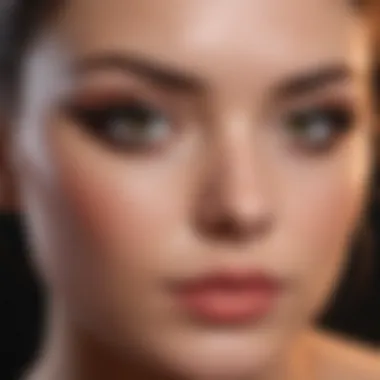
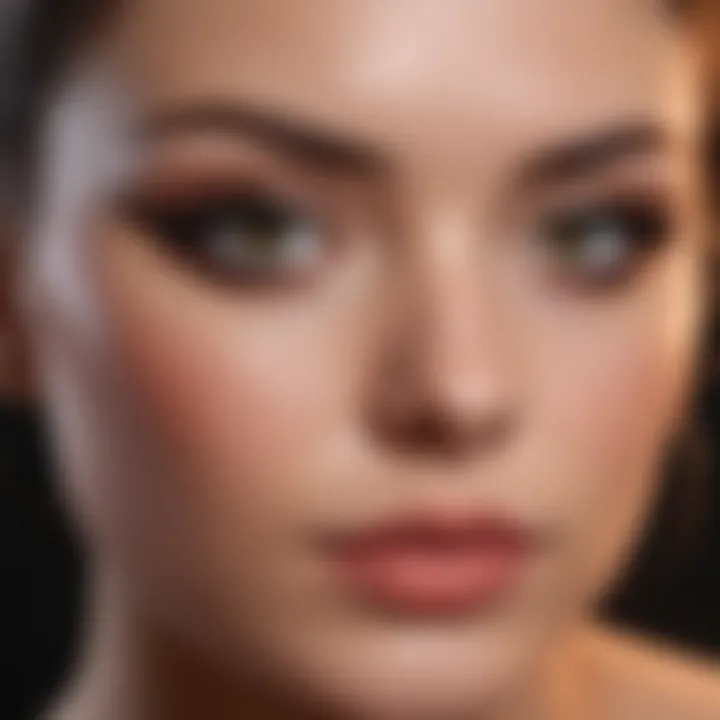
Common Mistakes and How to Avoid Them
Applying eyeliner pencil can be a subtle art form, yet many beginners make common mistakes that can undermine their efforts. Recognizing these errors is essential for achieving the desired look and for honing your skills. Understanding what to avoid not only saves time but also enhances the overall quality of your makeup application. By addressing common pitfalls, you can master the technique more effectively and boost your confidence.
Overapplying Product
One prevalent mistake that many beginners make is overapplying eyeliner. It’s easy to get carried away, especially when looking for a bold statement. However, excessive application can lead to a heavy, unrefined look that may smudge or run throughout the day. To avoid this, it is better to start with a light hand. Begin with short strokes, gradually building up the intensity of the color. This method allows you more control over the amount being applied and the chance to correct any mistakes before they become more pronounced.
Another effective tip is to choose a pencil with a creamy formula. These typically allow for smoother application, reducing the need for excess product. Also, it’s wise to keep a makeup remover or cleansing wipes nearby for quick corrections should you feel you have gone too far.
Uneven Lines
Uneven lines can detract from the overall balance of your eye makeup. This error is often due to applying eyeliner without a clear technique or reference. Beginners may unknowingly alternate between pressure levels and stroke lengths, creating a jagged finish. To remedy this, consider employing a couple of techniques. First, practice drawing small dots along the lash line before connecting them. This technique can help in ensuring a more linear path and can alleviate anxiety about making corrections after the initial stroke.
Additionally, using a mirror that is positioned slightly above eye level can aid in better visibility and symmetry. It's also beneficial to have a fine-tip eyeliner pencil for precision when creating thin lines, especially in delicate areas like the corners of the eyes. Take the time to step back and evaluate your work periodically; this can help you catch unevenness early and adjust your strokes accordingly.
"Consistency in application is key. With practice, these mistakes will become less frequent as you develop your technique."
By being aware of these common mistakes and understanding how to avoid them, beginners can greatly enhance their eyeliner skills, leading to better application, longer-lasting results, and an overall polished look.
Tips for Long-Lasting Eyeliner Wear
The longevity of your eyeliner is crucial for maintaining a polished look throughout the day. Eyeliner can fade, smudge, or disappear altogether if not properly set, leaving your eyes looking less defined. To avoid such mishaps, employing certain techniques can enhance the durability of your eyeliner application. Understanding and applying these tips ensures that your eye makeup remains intact from morning to night. This section discusses two key methods: setting with powder and using primer.
Setting with Powder
Setting your eyeliner with powder can dramatically improve its staying power. When you apply eyeliner, especially if it's a creamy or gel formula, it can be prone to smudging or running. To combat this, lightly dusting a translucent setting powder over your eyeliner creates a barrier that locks it in place.
- Choose the Right Powder: Use a fine, translucent powder. This type of powder won't alter the color of your eyeliner, ensuring your intended look remains.
- Application Technique: After applying your eyeliner, take a small, flat brush to pick up the powder. Tap off any excess product before gently pressing it onto your eyelid along the eyeliner. This step must be done lightly to avoid disrupting the eyeliner underneath.
- Better Longevity: By using this technique, your eyeliner not only lasts longer but also appears more refined. It helps in absorbing excess oils from your eyelids, preventing the eyeliner from transferring or fading.
Using Primer
Applying a primer is essential for maximizing the endurance of your eyeliner. Primers serve as a foundation for your makeup application, ensuring improved adhesion of the products used afterwards. A good primer keeps the oil production in check and creates a smooth canvas for your eyeliner.
- Select an Eye Primer: Opt for a specific eye primer designed to handle the delicate eyelid area. This product creates a shield against sweat and oils, both of which can break down your eyeliner.
- Correct Application Method: Apply a small amount of primer on your eyelids before any makeup application. Use your finger or a brush to evenly distribute the product. Make sure not to apply too much, as that could cause the eyeliner to slide off later.
- Long-Lasting Results: Not only will your eyeliner look fresh all day, it also allows for smoother application, reducing the risk of uneven lines or patchy areas.
"A well-set eyeliner is the backbone of any eye makeup look, ensuring you retain that polished appearance we all desire. "
Together, these techniques not only elevate your eyeliner game but also provide the assurance that your look will stand the test of time. By implementing these tips, beginners and experienced users alike can enjoy bold eyes that last. A consistent approach to these practices will yield a deeper understanding and a refined technique over time.
Removing Eyeliner Safely
Removing eyeliner properly is a crucial step in any makeup routine. It is essential for maintaining the health of the eye area. Not removing eyeliner can lead to various issues such as irritation, infections, and clogged pores. The sensitive skin around the eyes deserves gentle care, and choosing the right products is part of that care.
Choosing the Right Makeup Remover
Selecting a suitable makeup remover can significantly impact how well your eyeliner comes off. Different types of removers are available, and knowing which to choose is important.
- Oil-based removers are effective for gel and waterproof eyeliner. They dissolve long-lasting formulas with ease.
- Micellar water is gentle and suitable for daily use. It effectively removes makeup without harsh scrubbing.
- Cream removers can provide added hydration, which is beneficial for dry skin.
- Makeup wipes are convenient but may not be as effective for stubborn eyeliner.
When picking a remover, consider your skin type and the type of eyeliner used. Always read labels for ingredients that suit your skin.
Gentle Techniques for Eye Removal
Using gentle techniques is vital to avoid damaging the skin around the eyes. Here are some recommended methods:
- Soaking a cotton pad: Soak a cotton pad with your chosen makeup remover. Place it over your closed eye for a few seconds. This allows the product to break down the eyeliner.
- Wiping softly: After soaking, gently wipe away the eyeliner from the inner corner to the outer corner. Avoid harsh movements; instead, use soft, sweeping motions.
- Avoiding tugging: Never tug or pull at the skin. This can cause irritation and lead to premature aging.
- Rinse after removal: After all eyeliner is removed, wash your face with a gentle cleanser. This ensures no residue is left behind, maintaining skin health.
"Gentle removal of eye makeup preserves skin elasticity and health. Always prioritize care over speed."
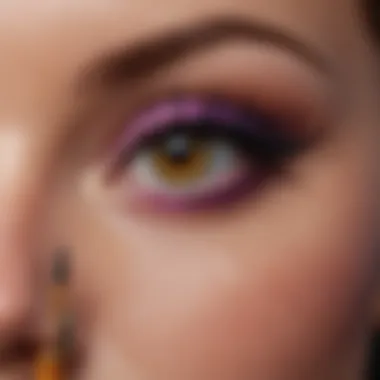
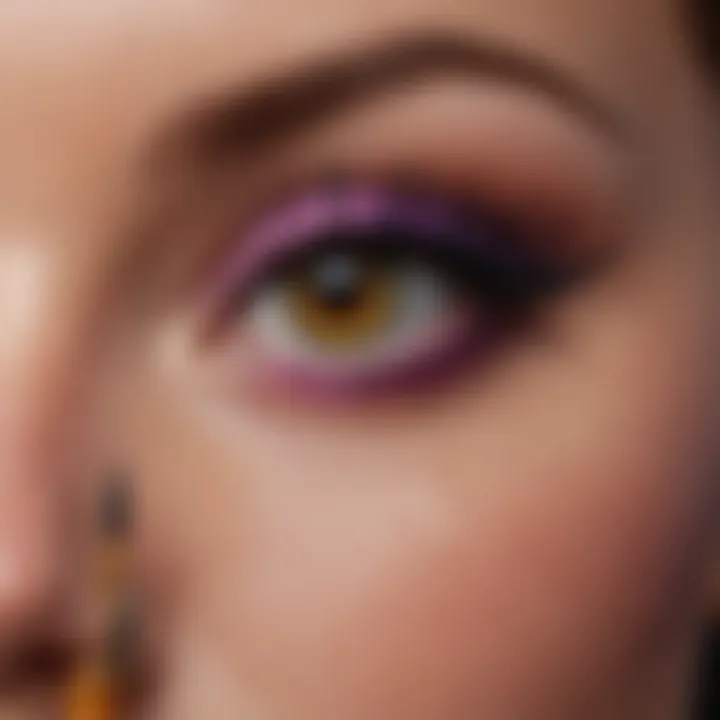
By following these practices, the process of removing eyeliner becomes simpler and safer. Taking time to use the right products and techniques helps keep eyes healthy while still enjoying the art of eyeliner application.
Adjusting Your Technique for Different Looks
Adjusting your technique when applying eyeliner is crucial for achieving different makeup looks. Understanding how subtle changes in application can affect overall appearance empowers beginners to express their style accordingly. An adaptable approach to eyeliner application allows you to embrace various settings—casual day events or elegant evening outings—with ease. The benefits of mastering these variations include enhanced versatility and the ability to match your look with outfit and occasion seamlessly.
Minimalist Look for Daytime
The minimalist look is ideal for daytime wear. It emphasizes a natural appearance while enhancing the eyes without overwhelming them. To achieve this effect, the application should focus on simplicity. Here are some techniques:
- Use a nude or light-colored eyeliner: Choose shades such as beige or soft brown that blend well with the skin tone.
- Keep the line thin: Apply the eyeliner as a fine line close to the lash line. This technique ensures that your eyes look subtly defined without an excessive emphasis.
- Focus on the upper lid: Apply primarily to the upper line, with little or no product on the lower line for a fresh look.
- Blend gently: If desired, use a small brush or fingertip to blend the liner slightly, softening the appearance.
This approach not only brightens the eyes but also keeps the entire makeup look light and airy.
Bold and Dramatic for Evening
For an evening look, boldness prevails. The eyeliner technique shifts significantly to create definition and allure. Here are tips for this style:
- Choose dark colors: Utilize deep colors like black, plum, or dark green, which stand out against the skin, especially in low light settings.
- Thicker, defined lines: Apply the eyeliner with a firmer hand, ensuring that it is more pronounced on both the upper and lower lash lines. This contrast contributes to a dramatic presence.
- Wing it out: Adding a winged tip can enhance the elegance of the look, providing a lift to the eyes.
- Consider layering: For extra impact, layer a gel liner over a pencil. This enhances the intensity and longevity of the eyeliner.
Ultimately, adjusting your technique for different looks not only improves your makeup application skills but also enhances your confidence. These methods allow you to showcase your personality through makeup, transitioning effortlessly from day to night.
Incorporating Eyeliner into Your Overall Makeup Routine
Incorporating eyeliner into your overall makeup routine is a critical step in achieving a polished and defined look. Eyeliner can dramatically change the shape of your eyes and elevate any makeup style, from minimalistic to elaborate. Understanding how to effectively include eyeliner enhances not only your eye makeup but also your entire appearance, allowing for greater versatility and expression.
Utilizing eyeliner provides several benefits. It can add depth and dimension to your eyes, making them the focal point of your face. Moreover, the right eyeliner application can create the illusion of fuller lashes and can subtly convey different moods or styles, whether you opt for a soft, natural look or a bold statement.
When incorporating eyeliner into your routine, consider the following elements:
- Functionality: Different eye shapes and sizes may require different techniques or products. For instance, in a routine intended for long wear, a waterproof eyeliner may be best to avoid smudging.
- Coordination: It is essential to match your eyeliner with your other makeup elements for a harmonious look. Eyeliner should complement both eyeshadow and lip color, ensuring that all components enhance each other rather than create visual discord.
- Application Technique: As described earlier, mastering various application techniques will allow you to adapt to different looks and styles as you become more confident in your skills.
Matching Eyeliner with Eyeshadow
When applying eyeliner, it is essential to consider the color and style of the eyeshadow used. Coordinating these elements is key to achieving a cohesive look. If you choose a bold eyeshadow color, selecting a subtler eyeliner shade can provide balance. Conversely, pairing a neutral eyeshadow with a striking eyeliner can create a dramatic contrast, drawing attention to your eyes.
- Complementary Colors: Use colors that are opposite on the color wheel for striking contrasts, or select shades within the same color family for a softer appearance.
- Finish: The textures of eyeshadow and eyeliner should also be in sync. If using a matte eyeshadow, a matte eyeliner will match better than a glossy one, and vice versa.
- Layering: Consider using eyeliner to enhance the eyeshadow. A subtle line on the upper rim can define the eye without clashing with vibrant eyeshadow.
Coordinating with Lip Color
Lip color is another crucial aspect that should work hand in hand with eyeliner. The integration of both elements creates a more complete and deliberate makeup look. Here are some considerations for coordinating lip color with eyeliner:
- Color Harmony: Choose lip colors that complement your eyeliner choice. If you use a dark eyeliner, a bold lip can create a balanced face. Light eyeliners work well with softer lip shades.
- Finish: Similar to eyeshadow, the texture of your lip product matters. A matte lip often pairs well with a matte eyeliner, while glossy lips can stand out against a more neutral eyeliner finish.
- Style Consistency: Consider the overall vibe you wish to present. For a cohesive makeup style, ensure that both your eyeliner and lip color represent the same aesthetic, whether it’s youthful and playful or sophisticated and chic.
Efficient Use of Eyeliner: Remember, incorporating eyeliner and coordinating with other makeup elements creates a more refined and sophisticated look that reflects your personal style.
Ending: Mastering Eyeliner Application as a Beginner
As we conclude this guide, it is essential to recognize the significance of mastering eyeliner application, especially for those just starting in makeup. Eyeliner can transform the appearance of one's eyes, adding definition and accentuating beauty. However, for beginners, the journey can sometimes feel overwhelming due to the various techniques, products, and tools available.
Importance of Mastering Eyeliner Application
Understanding the fundamentals of eyeliner application can boost confidence and enhance skills. Mastery of this technique leads to a more polished makeup look and allows for experimentation with styles. Learning how to handle an eyeliner pencil properly is not just about aesthetics; it reflects self-expression.
Key Elements to Consider
- Technique: The steps outlined in this guide provide a clear process. Practicing different application methods helps in finding what works best for the individual.
- Personalization: Each person's eye shape and makeup style are different. Tailoring the technique to suit one's unique features can significantly impact the final result.
- Product Choice: With various types of eyeliners available, selecting the right formula is critical. Beginners should consider factors like ease of use, staying power, and skin sensitivity.
- Confidence Building: The more one practices, the more comfortable they will become. This confidence can extend beyond makeup, creating a sense of empowerment.
"Practicing these steps regularly is key to becoming proficient. Each application will become easier and more refined with time."
Benefits of Mastery
- Enhances Eye Definition: Proper eyeliner application accentuates the eyes and can make them appear larger or more expressive.
- Versatile Looks: From subtle to dramatic styles, mastering eyeliner opens the door to a myriad of makeup options.
- Improved Makeup Skills: As one becomes skilled at applying eyeliner, they often find it easier to tackle other makeup techniques as well.
To conclude, becoming proficient in eyeliner application is not just about achieving a beautiful look. It is a pathway to indulging oneself in the art of makeup. Embracing the learning process, while being patient with oneself, is vital. With time, practice, and attention to the guidelines in this guide, any beginner can evolve into a confident makeup enthusiast.



